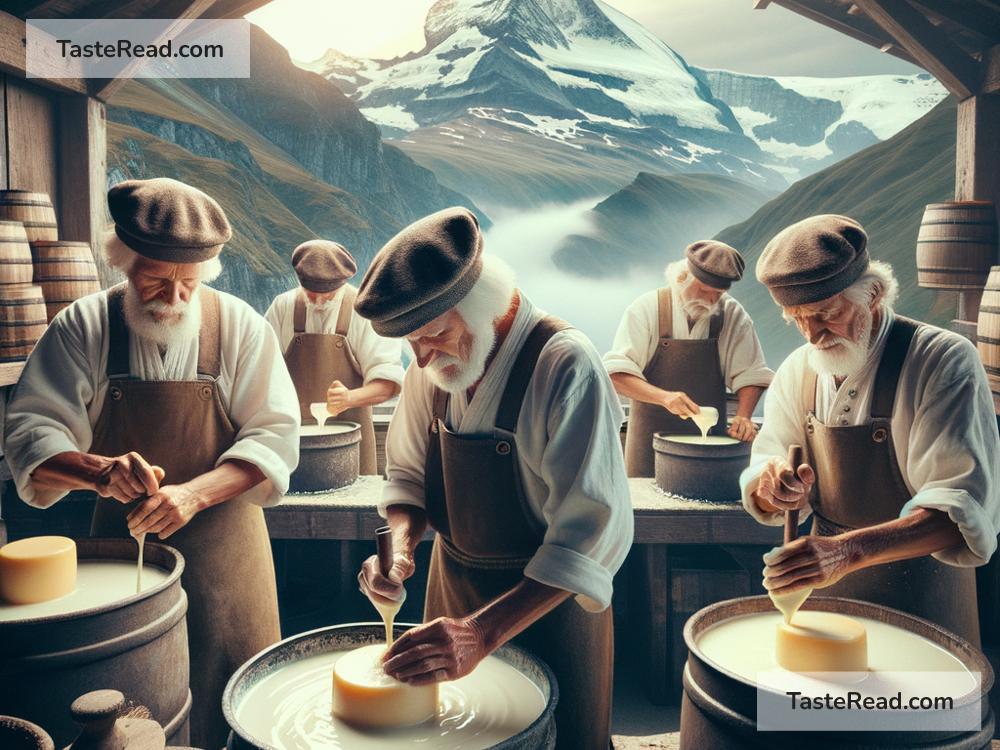Exploring the Cheese Makers of the Swiss Alps
When you think about Switzerland, a few things might come to your mind: the majestic Alps, the scenic beauty of its lakes, and, of course, chocolate. But there’s another gem hidden in the Swiss culture that deserves as much attention—the art of cheese-making, especially in the Swiss Alps. Come with me on a journey to discover the magic behind the cheese makers of this beautiful region.
The Swiss Alps are not just a treat to the eyes; they’re the birthplace of some of the world’s most beloved cheeses. This region, with its lush green pastures and fresh Alpine air, provides the perfect conditions for producing world-class cheese. The secret lies not only in the natural environment but also in the centuries-old traditions passed down through generations.
The Art of Cheese-making
Cheese-making in the Swiss Alps is an art form as well as a science. The process starts with the milk, and not just any milk, but milk from cows, goats, or sheep that graze on Alpine grass. This grass is special because it grows in clean air and is rich in a variety of herbs and flowers, which contributes to the unique flavor of the cheese.
Cheese makers in the Swiss Alps still follow traditional methods, which involve a lot of human touch and intuition developed over many years. One of the most fascinating aspects is the use of copper vats for heating the milk, a technique that cheese connoisseurs swear by. The cheese is then aged, sometimes in cool cellars or caves, where it develops its character and flavor.
A Journey Through Swiss Alpine Cheeses
Let’s take a quick tour of some of the best-known cheeses from the Swiss Alps, each with its own story and taste.
1. Gruyère: Named after the town of Gruyères in Switzerland, this cheese is smooth yet slightly grainy, with a complexity that varies with age. It’s perfect for your fondue pot or simply on a slice of bread.
2. Emmental: Famous for its characteristic large holes, Emmental is what most people picture when they think of Swiss cheese. It has a sweet, buttery taste that becomes more pronounced as it ages.
3. Appenzeller: Known for its nutty and spicy flavor, Appenzeller cheese is bathed in a herbal brine, which gives it a unique taste. Its recipe is a well-kept secret, adding to its allure.
4. Raclette: This cheese is all about the melting. Traditionally, a wheel of Raclette is heated, and the melted cheese is scraped off onto potatoes, pickles, and onions. It’s a decadent and social eating experience, perfect for gatherings.
Visit to a Traditional Cheese Maker
Imagine visiting a traditional cheese dairy in the Swiss Alps. As you step inside, you’re greeted with the rich, comforting smell of cheese at various stages of the aging process. The cheese maker, wearing a smile and an apron, is ready to share their world with you.
You learn about the daily routine, which starts early in the morning with the milking of the cows and moves on to the careful monitoring of the cheese as it ages. You’re struck by the passion and care that goes into every step, ensuring the highest quality. There’s a sense of pride in maintaining tradition while also embracing modern techniques to sustainably produce cheese.
Supporting Local Cheese Makers
The cheese makers of the Swiss Alps face challenges today, from climate change affecting pasture lands to the pressures of modernization. Supporting these artisans by buying their products or visiting their dairies can make a significant difference. It’s a way to keep tradition alive and ensure that future generations can enjoy the unique flavors of Swiss Alpine cheeses.
Conclusion
The Swiss Alps offer more than breathtaking landscapes; they are a haven for cheese lovers. Exploring the cheese makers of this region is a journey into tradition, taste, and the passion that goes into producing each wheel of cheese. Whether you’re sampling a slice of Gruyère or witnessing the making of Emmental, you’re experiencing a piece of Swiss heritage. So, next time you enjoy a Swiss cheese, remember the artistry and history molded into every bite.


